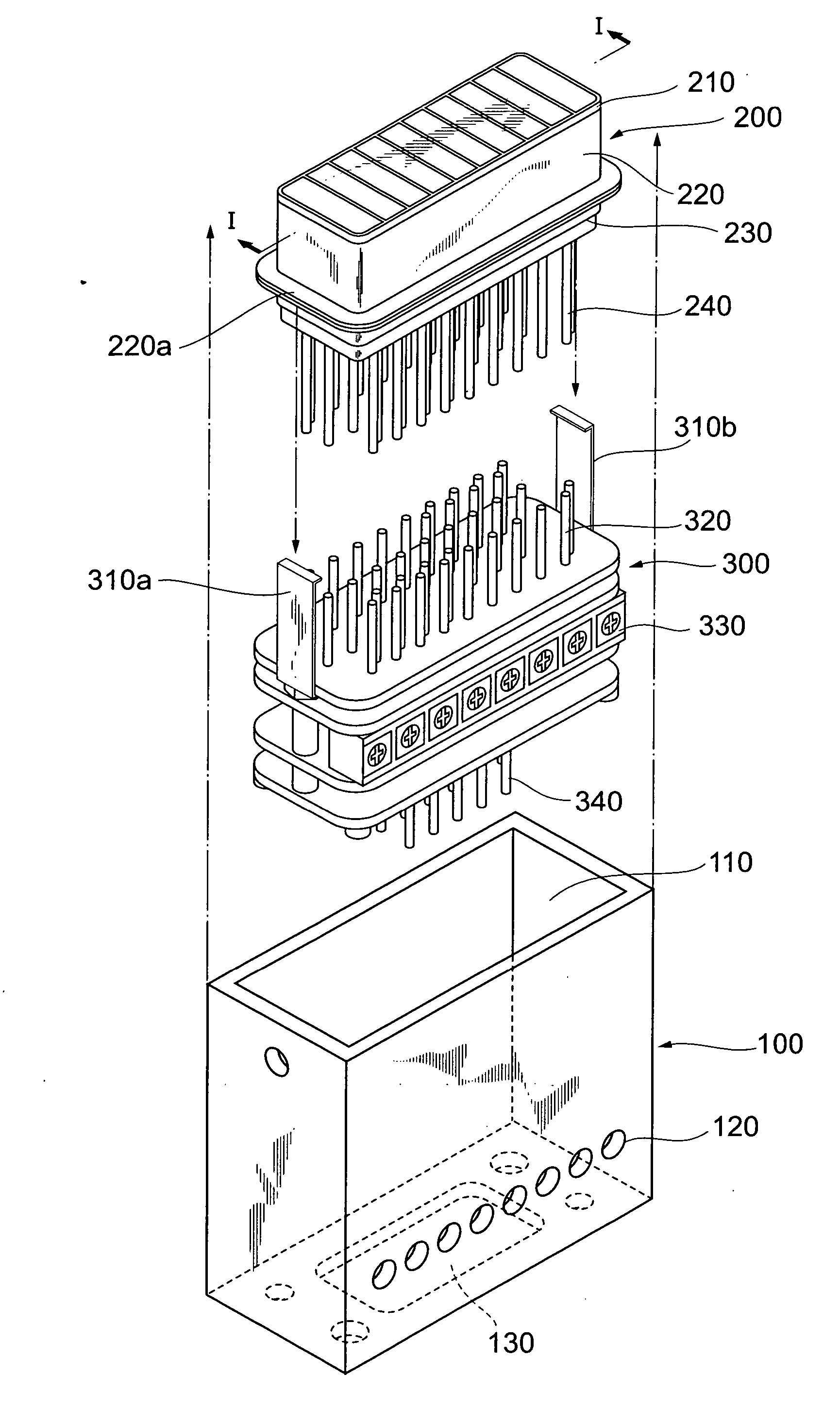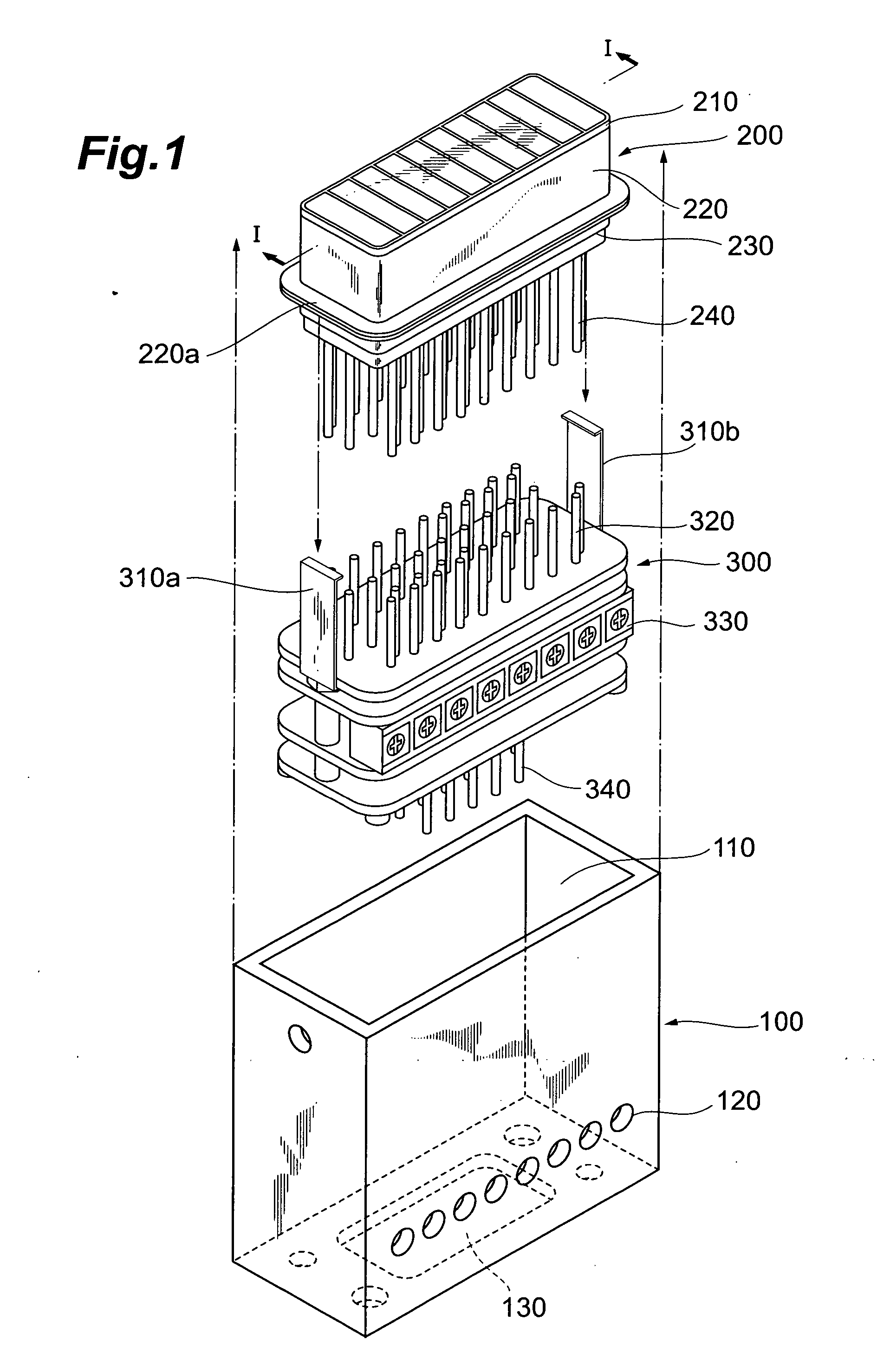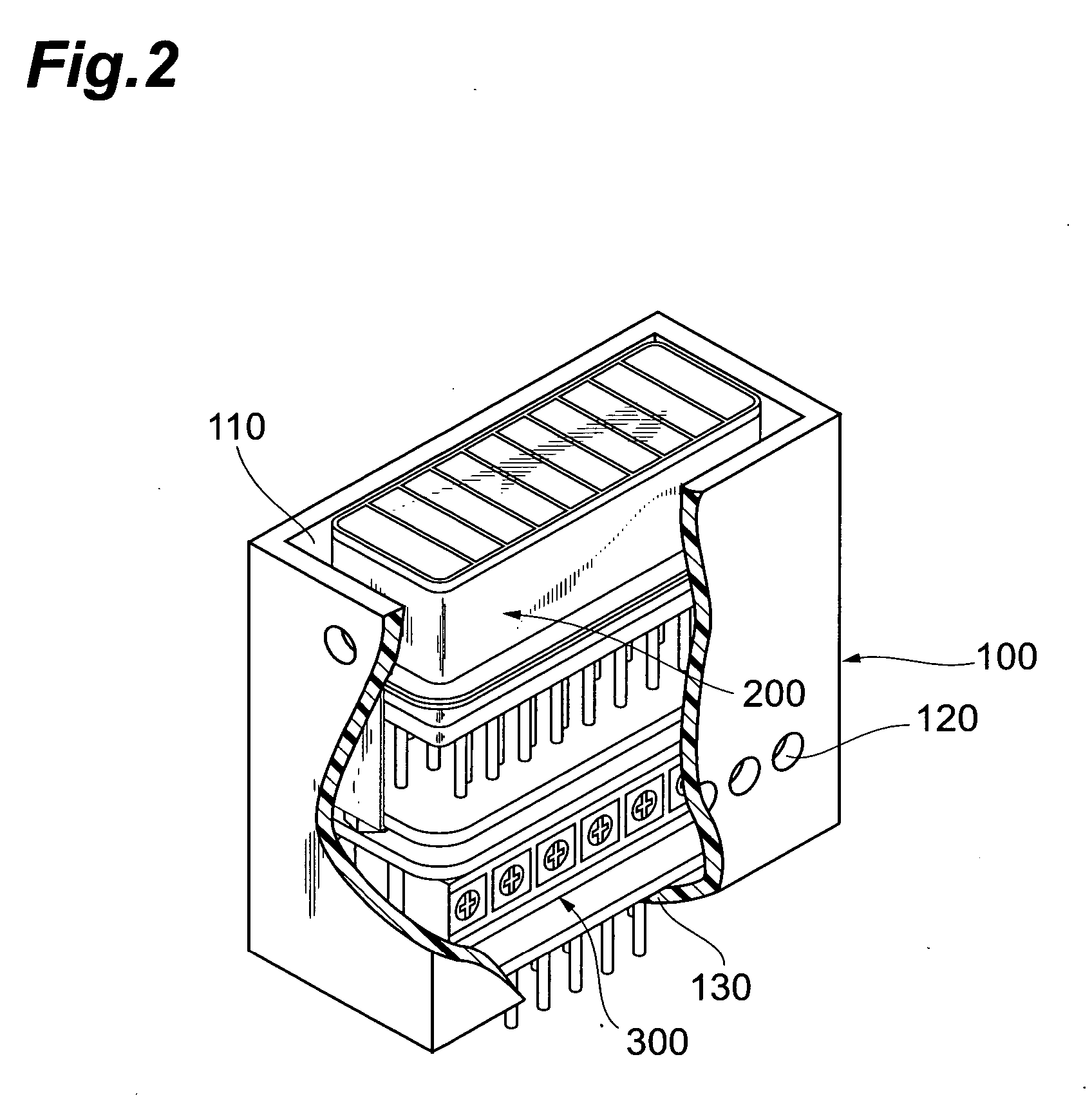Photodetector using photomultiplier and gain control method
- Summary
- Abstract
- Description
- Claims
- Application Information
AI Technical Summary
Benefits of technology
Problems solved by technology
Method used
Image
Examples
Embodiment Construction
[0038] In the following, embodiments of a photodetector and a gain control method according to the present invention will be explained in detail with reference to FIGS. 1-6, 7A-8B, 9-10, 11A-15B and 16. In the explanation of the drawings, constituents identical to each other will be referred to with numerals identical to each other without repeating their overlapping descriptions.
[0039]FIG. 1 shows an assembly process diagram of a configuration of a photodetector according to the present invention, and FIG. 2 shows a partially broken-away view of a configuration the photodetector according to the present invention. In the following embodiment, as a photomultiplier applied to a photodetector, an 8-channel multi-anode type of photomultiplier, in which an entrance face plate is partitioned into eight effective regions, will be explained.
[0040] As shown in FIG. 1, the photodetector, which is applied to the photodetector according to the present invention, comprises a case 100, a photo...
PUM
 Login to View More
Login to View More Abstract
Description
Claims
Application Information
 Login to View More
Login to View More - R&D
- Intellectual Property
- Life Sciences
- Materials
- Tech Scout
- Unparalleled Data Quality
- Higher Quality Content
- 60% Fewer Hallucinations
Browse by: Latest US Patents, China's latest patents, Technical Efficacy Thesaurus, Application Domain, Technology Topic, Popular Technical Reports.
© 2025 PatSnap. All rights reserved.Legal|Privacy policy|Modern Slavery Act Transparency Statement|Sitemap|About US| Contact US: help@patsnap.com



